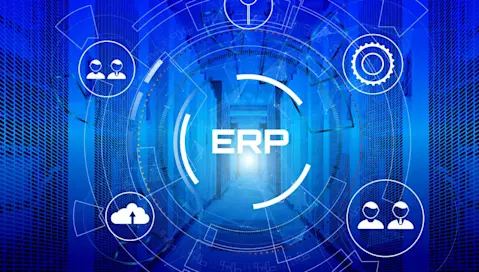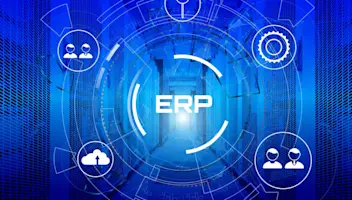Featured in this post
The Challenges of ERP - Enterprise Resource Planning
The Challenges of ERP - Enterprise Resource Planning
1 Feb 2021
Aptean Staff Writer
An ERP implementation is a major undertaking for any organization. The implementation process requires that companies fully examine their business, look for efficiencies, and spend a significant amount of time and effort to train staff and test the software before it is ready for go-live.
Unfortunately, in the rush to realize benefits and minimize time spent on the project, it's easy to dive into an ERP implementation without fully understanding what will be involved. This lack of knowledge up front can result in some unpleasant surprises farther down the road—costing your business time and money.
So that you can more fully prepare for your own project, here are some of the challenges that organizations face at different stages of an ERP implementation, along with guidance on how to address them.
Selecting the Right ERP Software and Vendor
As you begin your ERP search, keep in mind that the lifespan of technology companies can be pretty short, and the last thing you want is to choose the perfect company, only to find they’re no longer in business a few years later. And while there’s no guarantee that a company without expertise in your particular industry will fail, you can expect a greater learning curve on the part of your new software provider.
Choose a vendor with an established history and dedicated future plans
Look for references, testimonials or case studies from happy customers
Look for “vertical” solutions with a particular focus on your industry
Understanding the Implementation Time
An ERP program is not an app that your users can download, install, and have up and running in 10 minutes. Your organization is undertaking a significant project, and implementation times greater than a year are not uncommon. And don’t forget – your users will have to balance their ERP responsibilities alongside their day-to-day jobs, too.
Go into your project with realistic timeframe expectations
Get a clear picture of the costs, and budget accordingly
Set the appropriate workload expectations with your team members
Buy-In From Top Management
Sure, your entire executive team will attend the first kick-off meeting with plenty of excitement and enthusiasm. But as time passes and this level of involvement from management shrinks to disinterested attendance during the monthly status check-in call, you can be assured that the rest of your organization will follow their leaders when it comes to prioritizing the ERP implementation over other activities.
Place a high priority on the implementation among your company’s stakeholders
Identify one or more “champions” from the executive team to sustain motivation
Plan on continued engagement from management throughout the project
Resistance To Change
Some people don’t like change. Whether it’s a comfort level with the current software, nervousness over having to learn a new system, or resistance to business process changes that come about as a result of the implementation, there may be some naysayers who are completely convinced the new software won’t work.
Share the benefits a new system will bring to the entire company
Provide support and communicate your understanding that training will take time
Stress that ERP systems can be enhanced to meet your specific requirements
Understanding Key Features
A new ERP system represents a substantial investment of time and money; it only makes sense that you take the time to understand it. Signing the paperwork with your vendor, only to discover that a component you thought worked one way actually behaves the exact opposite is a recipe for disappointment.
Ask questions; never assume the software acts in a particular way
Be prepared to take ownership of your software
Embrace automation, but make certain you understand how the system behaves
Adherence to Old Processes
Sometimes, a company will go into an ERP implementation with the goal of “making the new system just like the last one.” The problems and inefficiencies of the existing environment are the entire reason for why a new program is necessary; why would anyone want to replicate that?
Use the implementation as a chance to evaluate your current business processes
Identify the things that make you unique and need to be present in your new system
Keep an open mind; be open to your vendor’s suggested changes
Comprehensive Analysis and Design
Your ERP implementation begins with a requirements analysis, which is where you will review your business with the vendor so that needed enhancements can be identified and a project plan be put together. Giving your vendor an incomplete picture of your company at this stage will result in an incomplete solution, with users wondering why the delivered product is missing crucial features necessary to do their jobs.
Be prepared to walk the vendor through every facet of your business
Make sure your vendor fully understands your goals, both today and tomorrow
Document requirements, so that everyone can refer back to them months later
Project Risks
The extended length of an ERP implementation naturally makes it vulnerable to unforeseen project risks. Key project members from both the customer and vendor teams may leave, other business initiatives may be given greater priority, and a general loss of momentum can all result in missed due dates and budget overruns.
Have multiple team members involved to mitigate against any one person’s absence
Employ good project management practices to stay on track in acheiving milestones
Work to identify and deal with project risks early, before they become problems
Quality of Legacy Data
A key part of an ERP implementation is the transferring of records and data from your current software to the new environment. When the condition of this legacy data is poor, or the process of importing it into the new system is inefficient, the time spent cleaning up these records into something usable can quickly eat into the implementation schedule.
Review your existing data and decide what data needs to be migrated to the new system
Scrub old, unnecessary records from your current software
Employ spreadsheets and other data tools to export and import information
Sufficient Testing
How is it possible for a critical software problem that causes business to grind to a halt to crop up just a few weeks into using a new ERP system? More often than not, the answer is insufficient testing by the company’s end users through the course of the implementation. Thorough testing is the only way to expose issues and provide assurance that everything is working as desired.
Plan and schedule time for employees to complete their testing responsibilities
Create testing plans that walk through business tasks across your organization
Test for unexpected results, failures and mistakes in data entry
Aptean offers a range of innovative, industry-specific ERP systems to solve your unique challenges, all backed up by our expert teams. So you can be sure you're not just buying a software solution, you're building a long-term partnership. To get started contact one our team today.
Related Blogs


Get in touch with one of our ERP software experts today
To accelerate growing your business, you need an ERP solution built specifically for your industry. We're ready to help—reach out today to request a callback.






